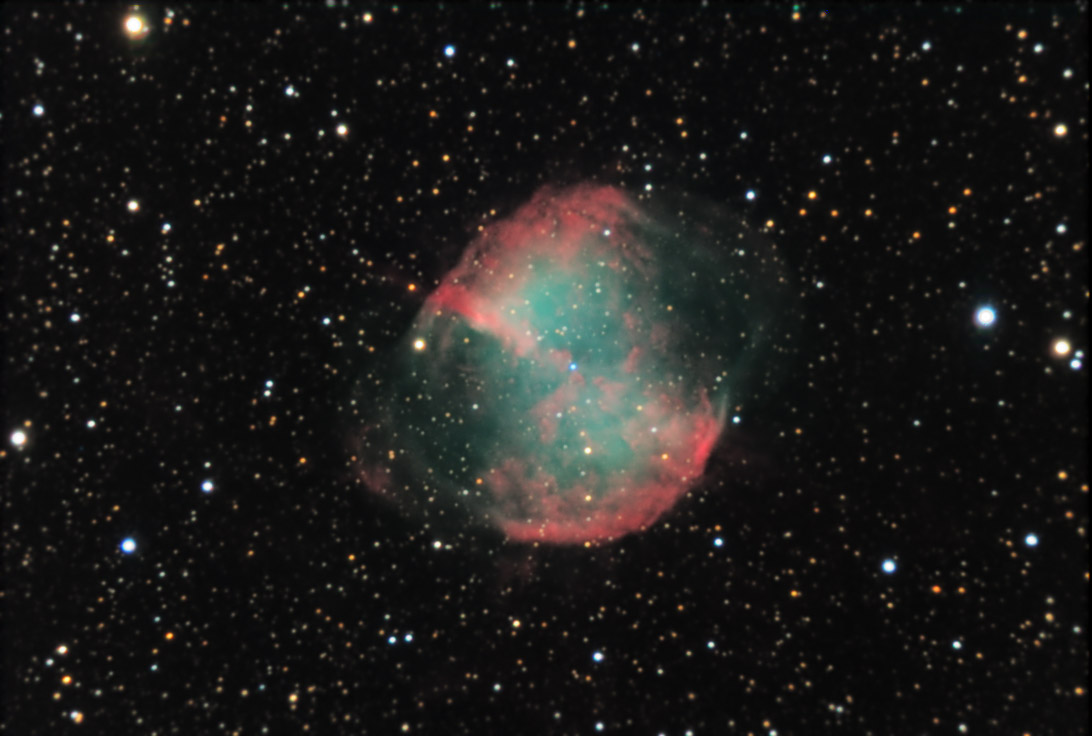M27
Dumbbell Nebula

M27
Dumbbell Nebula
Messier: 27
Right Ascension: 19h 59m 34s
Declination: 22d 43m 18s
Date: July 2009
Exposure: L = 10x3m RGB = 6x5m
Processing Notes: Data capture in CCDSoft. Data reduction and alignment in CCDStack. Images ombined in Sigma Beta. RGB combine in AstroArt and saved as a Tiff (view). L imported into Photoshop via an arcsine stretch. Gaussian blur on dim areas, unsharp mask on brighter areas. Combined with RGB in Photoshop with a 3-layer multiply.
Scale: 1.00
Additional Comments: M27 has been imaged several times at the FLC Observatory. Individual exposure length is the main improvement over the 2008 version. http://www.fortlewis.edu/observatory/image_detail.asp?ID=73 In this version, I realized after the fact that the telescope collimation could have been improved.
A planetary nebula occurs when a sun-like star is reaching the end of its life. Typically, the star will have a core made of carbon, surrounded by a shell of helium (in the process of fusing into carbon), and outer layers of mostly Hydrogen. The fusing Helium will shrink and heat the core, attempting to fuse the carbon into heavier elements, but the temperature and pressure will never be great enough in a star of this (relatively low) mass to fuse the carbon. As a result, this very hot carbon core and helium shell drive off the outer layers of hydrogen. As these outer layers are driven off by the intense heat of the core, they form what is called a planetary nebula, that is visible as a shell of glowing gas surrounding a very hot central star. (Note that the term "planetary" has nothing to do with planets - they are called planetary because in early telescopes they appeared to be tiny fuzzy disks that reminded observers of planets!) Because the details of this shedding process can vary significantly from star to star, all planetary nebulae are unique, and many show multiple shells, as different layers are shed over a period of time. Eventually, the shell will dissipate and the hot core, now called a white dwarf, will remain. A white dwarf can have as much mass as the Sun, but compressed into a sphere the size of the Earth. For more information, try http://en.wikipedia.org/wiki/Planetary_nebula
Views: 4353
 This work is licensed under a Creative Commons Attribution-NonCommercial-ShareAlike 4.0 International License.
This work is licensed under a Creative Commons Attribution-NonCommercial-ShareAlike 4.0 International License.

